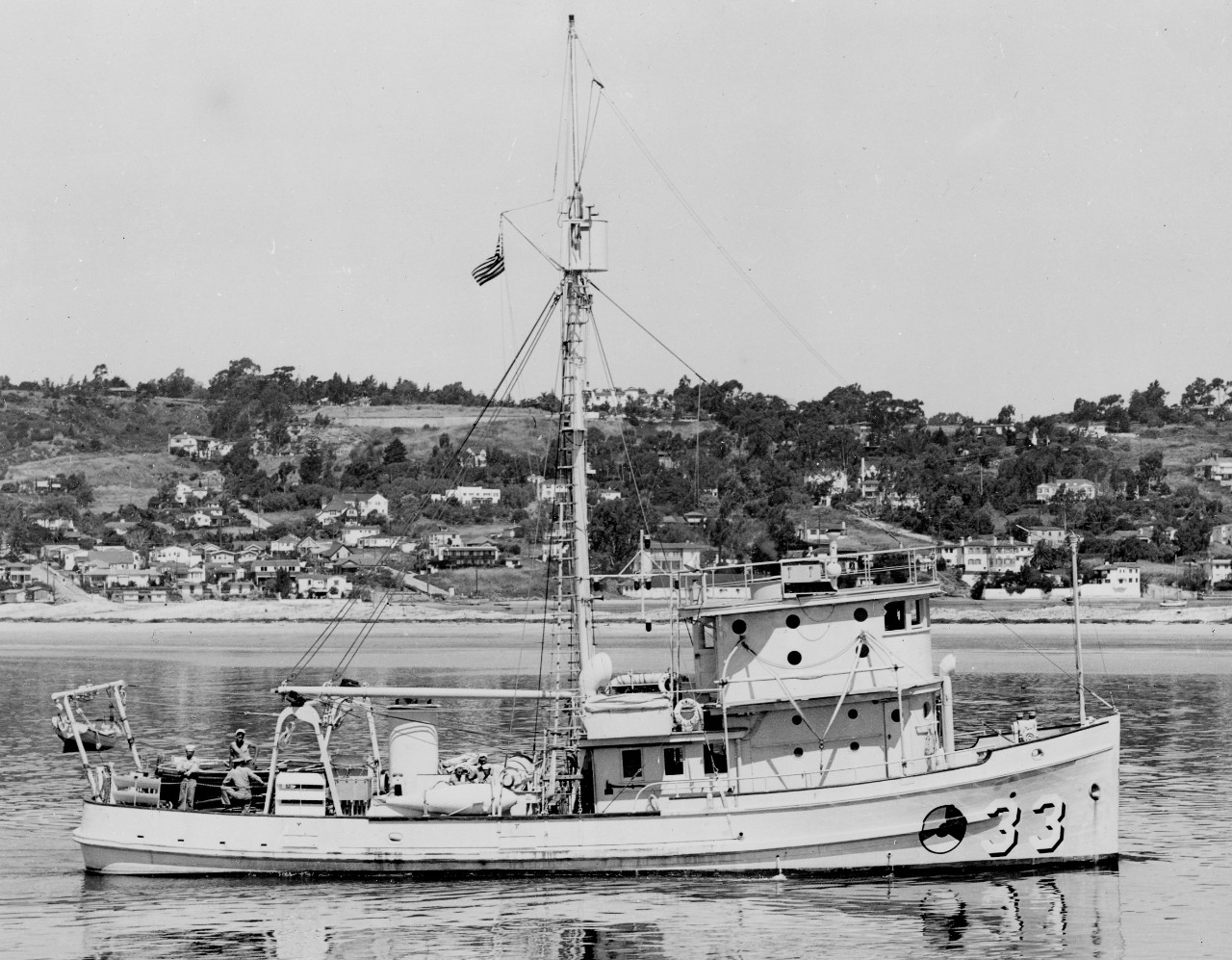Firecrest I (AMc-33)
1941–1944
A small European kinglet.
I
(AMc-33: displacement 170 (standard); length 76'6" (overall); beam 21'5"; draft 4'5"; speed 9.0 knots; armament 2 .50-caliber machine guns, 4 rifles)
The wooden-hulled purse seiner S. G. Giuseppe, built in 1937 at Wilmington, Calif., by Trigoning & Carlson, boatbuilders, was acquired by the Navy from M. B. Giuseppe, of San Pedro, Calif., on 5 November 1940, and delivery and acceptance by the Commandant, Eleventh Naval District, took place the same day. Conversion to a coastal minesweeper began immediately at the Campbell Machine Co., San Diego, Calif.; renamed Firecrest and designated as a coastal minesweeper, AMc-33, the ship was placed in service on 4 April 1941, Ens. Charles S. Judson, Jr., D-V(G), USNR, officer-in-charge.
By the end of April 1941, Firecrest was operating out of the Section Base, San Diego, north of the destroyer base at that port. In concert with the coastal minesweeper Courser (AMc-32), she began daily operations in San Diego harbor, streaming her sweep gear; she also conducted independent sweeping operations during that time.

As the spring of 1941 gave way to the summer, Firecrest alternately swept the harbor waters with her magnetic or acoustical gear, patrolled, or conducted training. On 17 July 1941, during a towing operation in a heavy ground swell, she lost one of her 400-pound anchors.
After a brief period out of service pending the arrival of new parts for her 540 kilowatt generator engine (3-4 December 1941), she resumed active operations on 5 December 1941, underway on assigned duty planting drill mines. Two days later, however, the Japanese surprise attack against the Pacific Fleet at Pearl Harbor and other installations on Oahu, resulted in emergency duty for Firecrest at the harbor entrance, with four new men being assigned to her complement.
With her home yard at Mare Island, Vallejo, Calif., and her home port, San Diego, Firecrest was transferred from duty under Commander, Western Sea Frontier to Commander, Naval Local Defense Forces, Eleventh Naval District, on 16 March 1943. She conducted coastal patrol and minesweeping operations into the following summer. With Firecrest’s services “no longer required in minesweeping duties,” Commandant, Eleventh Naval District, was requested (20 July 1944) to remove all type and military equipment and place her out of service with an eye toward future disposition. Accordingly placed out of service on 18 September 1944, Firecrest was stricken from the Navy Register on 14 October 1944 and delivered to the War Shipping Administration on 3 April 1945.
Reverting to her original name, S. G. Giuseppe, soon thereafter, and under the ownership of Antonio D’Ambra of Los Angeles, Calif., she operated in the fishing trade until Giro G. DiMeglio of San Pedro purchased her in 1951. Less than a decade later, S. G. Giuseppe Fishing, Inc., of San Pedro, acquired the vessel in 1959. Purchased by Arcangelo Savasta of San Pedro in 1973, the ship was renamed Gianni Bay, and operated as such until she was undocumented in 1985.
Updated, Robert J. Cressman
5 October 2022


